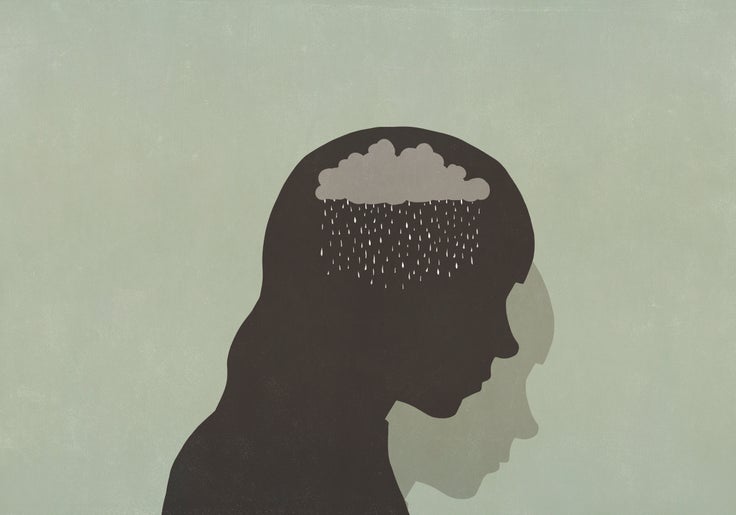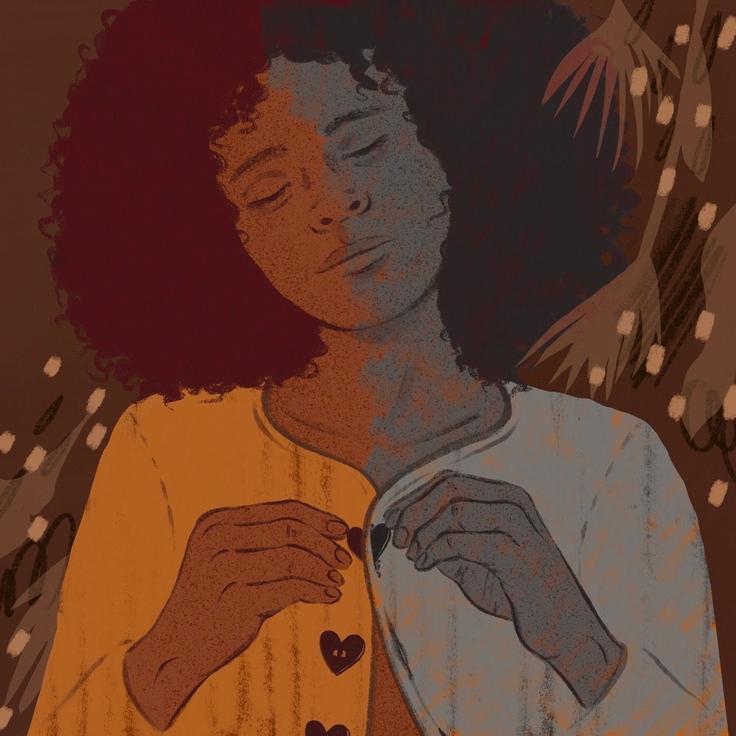Next month marks 15 years since I was diagnosed with bipolar II, and the challenges of managing the disorder still constantly sucker-punch me in the stomach. So, happy anniversary to me, I guess.
At 21, I’d moved from my home base in Texas to New Jersey. After completing a successful summer internship at Dolce & Gabbana in Manhattan, it appeared I had the world at my fingertips. While I was excited about the change, the dark cloud that had been threatening my disposition for a few years grew too heavy. The world was my oyster, but I soon learned that it would be accompanied by an unwelcome formidable foe.
After an unforgettable summer, I returned to Texas with renewed perspective and zeal to pursue my goals. But sadly, within nine months, I experienced back-to-back deaths in our family — and that’s when my life changed forever. One day, after class during my second year of college, what was ordinarily a peaceful drive home on the busy I-45 highway in Houston turned into the beginning of a downward spiral. I experienced a panic attack, an event that was entirely foreign to me, complete with shallow, labored breathing and frightening disorientation. When I finally made it home, I sobbed, overcome by anxiety. How did the strong, focused girl who was on a carefully plotted path hit a concrete wall?
There followed three years of misdiagnoses and unhelpful approaches. Paxil for depression first, which proved ineffective. A therapist for managing uncontrollable thoughts, which was both ineffective and comical. An attempt at handling it on my own because I was raised to be a “tough” Black woman — this was scary, lonely and also ineffective.
My dear mom carried the weight of the world and the darkness of her past on her shoulders with grace, a calm nature and a smile. I was expected to follow suit, and to juggle anything the world threw at me with aplomb. I was cool with that. After all, there’s nothing wrong with a little inner grit and unwavering faith, right?
Well, kind of. Stress management is great. Not being able to recognize when you’re in over your head, or even succumbing to the idea that seeking help is a weakness, is not.
“One in 4 people will be diagnosed with anxiety disorder, and depression is also very common, with an incidence rate of about 10% or 1 in 10 at any given time,” says Sabrina Gratia, a Black woman psychiatrist based in Brooklyn, New York. “So, the more people are talking about it, I think maybe there’s less and less of a stigma.”
Despite learning these stats, I still struggled to accept that I had a mental health disorder. Things are getting better now, but it was pretty taboo, especially in the Black community.
I was diagnosed with bipolar II at a time when everyone thought there was only one type of bipolar disorder. Instead of the strong mood swings that are characteristic of bipolar I — phases of high-energy euphoria, interspersed with emotional and physical exhaustion — bipolar II generally involves more stints of depression and less severe mood swings, called hypomania.
Gratia points out that the bipolar II experience can be painfully unique for Black women. We’re a double minority, first off, so there are multiple layers of stigma involved. “It’s like you have to be strong and not talk about it ― and that’s not helpful,” she says. “Some [of my patients] are like ‘I have to take on everything,’ or ‘I’m the pillar of my family,’ or something like that. But you are human, and you need time and space for yourself.”
Throughout my 20s, significant life changes exacerbated the symptoms of my disorder: my first time living solo in a fast-paced city, a high-stress “dream” job as a fashion buyer, and coming into my own as a young woman, all while trying to be the stalwart Black woman I was expected to be at home and at work. The lack of community ― of a place where people like me could share our experiences of bipolar II freely ― really hurt. While depression is more widely accepted among my white peers, it’s often brushed under the rug for women of color. It felt as if I wasn’t allowed to be my whole, human, vulnerable self.
Some of Gratia’s Black women patients feel trapped at work too. “You’re supposed to be a strong Black woman, but there’s tone policing and things like that,” Gratia says. “So there’s always this balance that you have to figure out, and that can be very frustrating.” I commiserate on that end: While achieving a measure of success by the world’s standards, I was fake-happy — smiling on the outside while drowning internally.
The lyrics to Kendrick Lamar’s “Mother I Sober” resonated with me ― in particular, the line “You ain’t felt grief till you felt it sober.” There were days I would drink to self-medicate while avoiding the prescribed lithium, the drug meant to keep the depressive spells at bay and lower the chances of suicidal thoughts. This isn’t going to defeat me, I told myself. You’re stronger than this, Gabrielle.
Sometimes acceptance can be just as powerful as the feeling of denial ― except one of them offers a path forward, and the other keeps you woefully stagnant. I mourned the happy-go-lucky former me. But she was gone, and I was a new person. Not broken; just new.
It took approximately three years to get to the level of acceptance that compelled me to act. Facing my bipolar head-on with meds, therapy and faith-based hope (what I like to call “pills and prayers”) has helped me to cope with this chronic disability.

Now, at 35, I feel more solace than shame. Mental health is being discussed more than ever before. And I’m comforted to know there are others like me out there.
“During the past few years, especially with social media, I think more people are talking about mental health and their mental health struggles,” Gratia says. “It’s not seen as if there’s something wrong with you or your perspective — I think that’s the big fear people have.” She points out that many of our role models in society (for example, athletes and artists who we consider strong and successful) openly talk about their mental health, and they’re living life.
There are days when I still grieve what may be a lifelong battle. But I realize I’m on the front lines with millions of others who take each blow day to day, with confidence that we’ll come out victorious. I’ve yet to find a support group, but my journey does include a trusted support system, which is necessary for anyone trying to navigate mental illness.
“I think the number one thing is to have a great relationship with the person diagnosing you and prescribing medication. It’s a journey, and you want to feel comfortable that you can ask questions,” Gratia says. She likens it to going to the gym and working with a trusted trainer to get healthier — which is a process. “I can’t just go to the gym once a month and expect results. I’ve got to put in the time and the work. I definitely see a higher demand for mental health services, which means people are getting help.”
I now realize the importance of advocating for myself through working with a therapist I trust, consistently taking medicine, and adjusting my lifestyle so I feel as balanced as possible. I still have my bad days, but making the choice to be candid about who I am and what I need, and not ashamed of it, helps keep my blessings at the forefront, and harness the power of acceptance to move forward.

